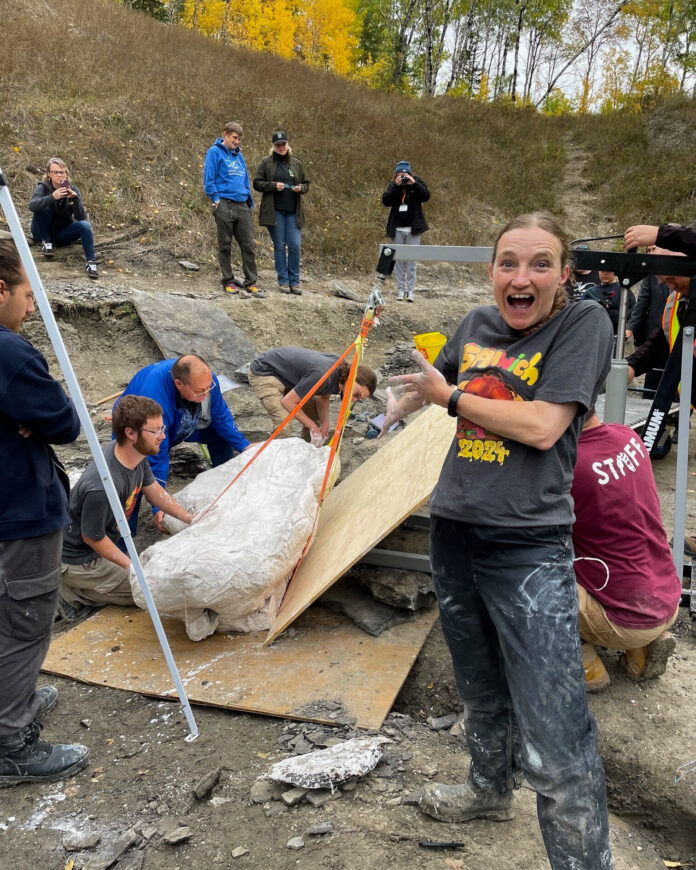Members of the Philip J. Currie Dinosaur Museum field crew have pulled out the first Pachyrhinosaurus skull since the museum’s opening.
The aptly named, “Big Sam” is a gargantuan 600-plus-pound fossil collected from the Pipestone Creek bonebed, and is described by Museum Curator, Dr. Emily Bamforth as a “big find” for her team.
“It’s the first skull that’s come out of the bonebed in almost two decades, we think it might be the biggest pulled out of Pipestone Creek, so by extension, out of northern Alberta,” she says.
Dr. Bamforth says the skull holds several interesting research opportunities as much of the find was preserved due to its orientation in the ground. She says her team was excited to find Big Sam upside down, resulting in some unique features for scientists to explore as the preparation stage carries on.
“The roof of the mouth is preserved, the braincase is preserved, the articulation between the frill, these things had a head shield like a Triceratops, the articulation between the skull and the frill is really good in this specimen,” she says. “We’re hoping that there’s a bunch of features that are preserved that we can do a lot of research on. We’ve only seen the side that was on the surface so we actually don’t know what the other side of the skull looks like, so that’s going to be a mystery.”
Bamforth confirms the skull will stay in the Peace Region, and preparation will take place in the museum’s lab, providing visitors with the unique opportunity to view the process in real-time. She says the preparation process could take up to a year or more, so the finished piece will not be viewable in the museum’s gallery for some time.
“It depends on how complicated the specimen is, it could take a little longer, but it is by far the most time-consuming part of the process,” she says.
When it comes to chasing down the rest of Big Sam’s body, Dr. Bamforth describes the Pipestone Creek bonebed as a “Pachyrhinosaurus omlette,” with different bones from a variety of specimens mixing together, so finding all of Big Sam could prove to be a difficult feat.
“We know the bones that are directly attached to the skull are Big Sam’s, we have a few bones that are very closely related that we believe belong to Big Sam, and we have other bones from the bonebed that are in the same size range as Big Sam, but we don’t know if they came from that individual or just another really big Pachyrhinosaurus, but there’s certainly more in the ground for sure,” she says.
Residents are encouraged to visit Big Sam throughout his preparation process at the Philip J. Currie Dinosaur Museum lab, as officials promise a series of “big reveals” in the coming months.




